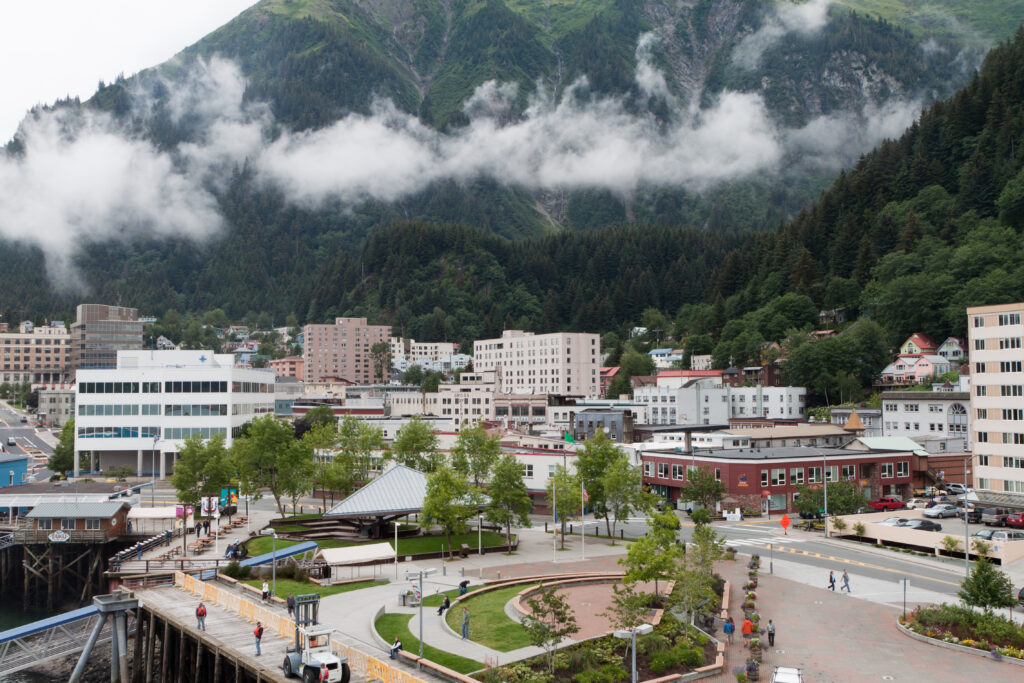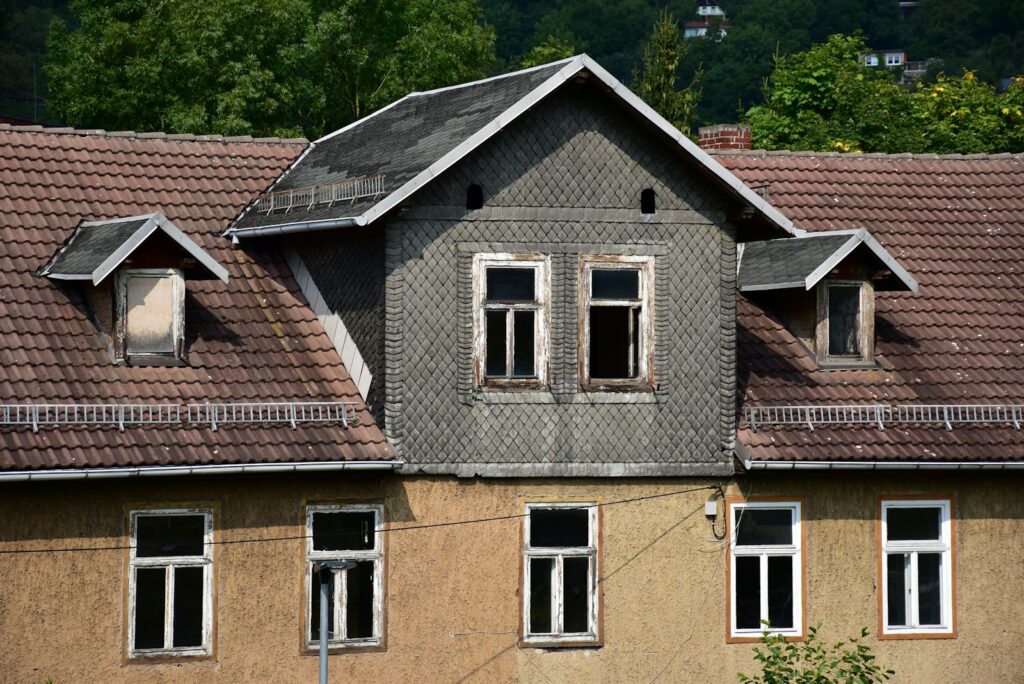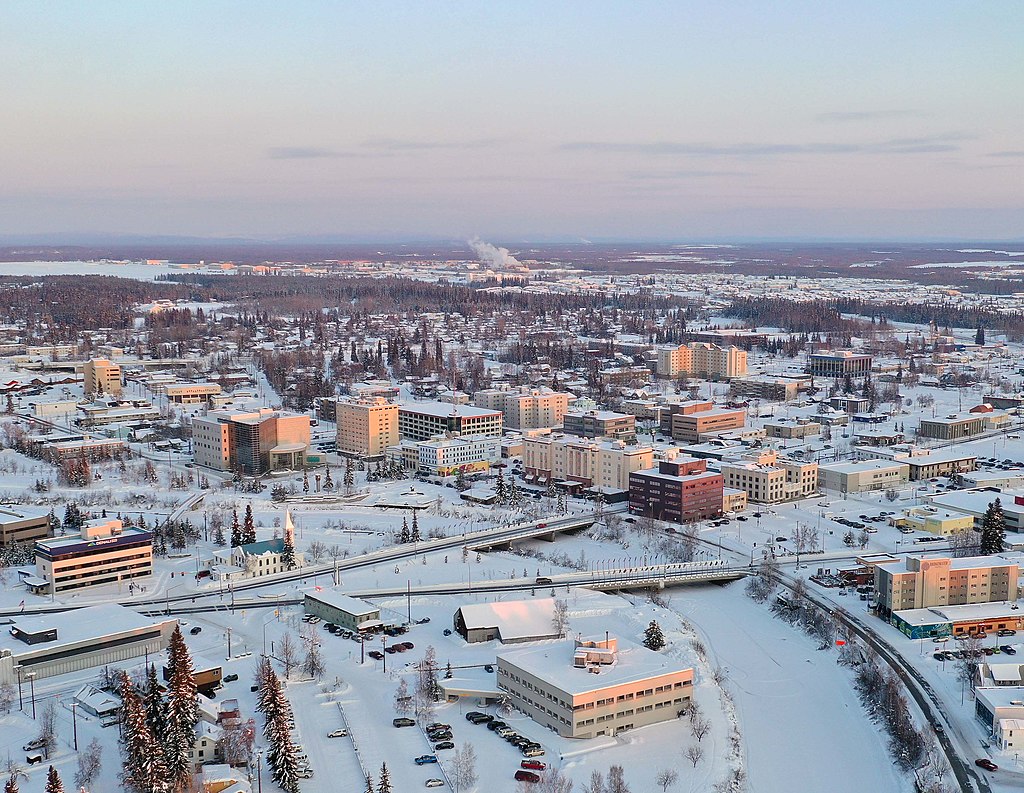In a remote corner of Alaska’s southwest tundra, the Yup’ik village of Nunapitchuk is facing a crisis that deepens with each passing season. The permafrost that once held homes, boardwalks, and gathering areas securely in place is thawing rapidly, softening the soil beneath people’s feet and shifting familiar routes. Families who have lived here for generations now watch the landscape change in ways few imagined possible. Buildings tilt, paths sink, and the ground moves unpredictably. With safety declining and stability no longer guaranteed, the community is preparing to relocate while trying to preserve traditions tied to the land they have long called home
Village Origins and Foundation

The village took shape decades ago on low, marshy tundra where Yup’ik families built homes close to rivers that provided fish, access, and seasonal rhythm. The frozen ground beneath made construction simple and stable, giving early residents confidence in the future of their settlement. Over time, small dwellings expanded into a network of homes connected by narrow paths, each reflecting the region’s deep relationship to the land. But the same permafrost that once made the place livable is now weakening. As warming temperatures reshape the terrain, the sense of permanence that guided earlier generations has been replaced by growing uncertainty.
Infrastructure Built on Frozen Ground
As the community grew, villagers constructed homes, boardwalks, fuel tanks, and public buildings under the assumption that the frozen soil beneath them would remain firm. Elevated walkways allowed people to navigate the wetlands year-round, while homes stood solid on the frost-hardened earth. Yet rising temperatures have transformed that once-reliable foundation. Floors now dip, posts tilt, and walls shift out of alignment as the ground softens unevenly. Boardwalks that once felt steady now sag underfoot, challenging daily routines. Maintaining essential structures has become a constant battle against a landscape that no longer behaves as it once did.
Thawing Permafrost and Shifting Land
Deep permafrost layers that supported the village for generations are now thawing, changing how residents move and work. Ground that once felt firm becomes soft and unstable during warmer months, turning familiar paths into unpredictable terrain. Homes sink or tilt as the soil settles unevenly, and temporary repairs offer only short-lived stability. Walkways that previously provided safe travel now bend or buckle, forcing people to tread carefully. Even everyday tasks like hauling water or checking on neighbors become more challenging. The land’s shifting nature serves as a daily reminder that the foundation the village depended on is disappearing.
Erosion, Flooding, and Water Intrusion

Erosion and flooding are adding new pressures to an already strained landscape. The nearby riverbank has steadily retreated, bringing water closer to homes once considered safely inland. Heavy storms and seasonal surges push water into low-lying areas, soaking the soil and deepening the instability beneath buildings. Pools of standing water linger for days, softening the tundra and accelerating ground collapse. Residents reinforce their homes as best they can, but rising water repeatedly undermines their efforts. Each storm season exposes new weaknesses, making it clear that the village’s location can no longer offer long-term protection against the changing environment.
Housing Damage and Health Concerns

As the land shifts, many homes have developed cracks in floors, walls, and structural supports, allowing cold air and moisture to seep inside. Damp interiors foster mould, worsening respiratory issues for children, elders, and those with chronic conditions. Families crowd into the limited number of stable houses, creating stress and reducing privacy. Repairing damaged structures has become difficult, as the ground continues to move beneath them. Winter brings further challenges as weakened homes struggle to retain heat. Each year, fewer houses remain safe, leaving residents uncertain whether their shelter can withstand another cycle of freezing and thawing.
Community Decision to Relocate
After years of worsening conditions, the community reached a difficult but necessary decision: relocation is the only long-term solution. Meetings brought families together to share concerns and acknowledge the emotional weight of leaving land tied to generations of memory. Ultimately, residents agreed that safety must come first, and a new site a few miles away on higher, more stable ground was chosen. Though the decision carries deep sadness, it also reflects the village’s resilience. Relocation offers a chance to rebuild homes, protect future generations, and continue cultural traditions in a safer and more predictable environment.
Costs, Funding, and Logistical Strain
Relocating an entire remote village requires extensive planning, coordination, and funding. The projected cost reaches hundreds of millions of dollars, covering new housing, utilities, transportation routes, and public facilities. Funding arrives gradually, often in small increments that slow progress. Because materials must be shipped long distances, each delivery adds complexity and expense. Residents worry about whether support will come quickly enough to stay ahead of worsening ground conditions. The relocation effort demands cooperation among multiple agencies, long-term commitment, and continuous adjustments, making the process as emotionally challenging as it is logistically difficult.
Cultural Disruptions and Identity Challenges
Relocation affects far more than buildings; it touches the core of Yup’ik culture. The community’s identity is closely tied to specific fishing grounds, berry patches, and seasonal hunting routes that shape daily routines. Moving to a new site may disrupt these long-held patterns, requiring families to adapt their practices to unfamiliar terrain. Elders worry about passing down place-based knowledge to younger generations when traditions are tied to locations they may no longer access easily. Even so, residents are determined to carry their culture forward, blending adaptation with preservation as they prepare for life on more stable ground.
Slow Transition and Daily Uncertainty
Although plans for relocation are underway, the process will take years, leaving residents in an extended period of uncertainty. Some families may move sooner as new homes are built, while others remain in the sinking village until construction progresses. Temporary fixes help manage immediate hazards, but the ground continues to shift, making long-term repairs impractical. This in-between stage creates emotional strain as people navigate a landscape that becomes less stable each season. Balancing hope for a safer future with the daily reality of living on unpredictable ground requires patience, resilience, and a strong sense of community.
Lessons for Climate Adaptation

The village’s experience highlights how climate change is forcing communities to confront difficult decisions long before global solutions are fully in place. As coastlines erode, rivers rise, and frozen ground thaws, more settlements will face similar challenges. This relocation effort underscores the need for proactive planning, adequate funding, and cultural respect in climate adaptation. The community’s determination to move together reflects both vulnerability and strength. Their story serves as a warning of what environmental change can bring, while demonstrating the resilience people can show when protecting their future and identity.
Comments